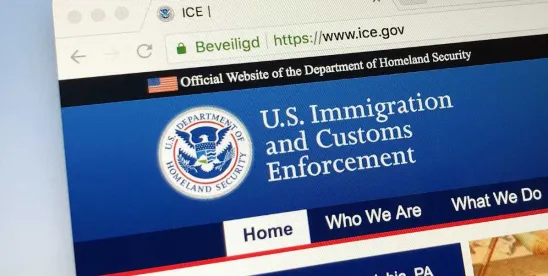One of the hallmarks of the new Trump administration is the saying “Promise Made, Promises Kept.” As to immigration enforcement, the administration is fulfilling its promise for strict enforcement of federal law. Illegal border crossings have plummeted, arrests in the interior are up, and immigration-related worksite visits are occurring regularly. In the coming months, the United States Department of Homeland Security (DHS) expects to increase the Notices of I-9 Inspections. Within DHS, Immigration and Customs Enforcement (ICE) will lead this effort, and ICE has a new artificial intelligence tool to support its I-9 Auditors and Special Agents. With this tool, ICE expects that it will be able to conduct many more I-9 inspections.
As another part of this increased enforcement, the new administration has terminated certain types of temporary employment authorizations established by the Biden administration. These include new parole programs and grants of Temporary Protected Status for citizens of selected countries. DHS has sent revocation notices to the affected individuals. Employers have not received the same information and have been uncertain how to respond as they seek to maintain a lawful workforce based upon valid Forms I-9.
New E-Verify Status Change Report
For E-Verify employers, DHS has developed a new tool to assist — the E-Verify Status Change Report (the “Report”). This Report provides information to help employers determine when they must reverify the Form I-9 because DHS has recently revoked the employment authorization on which a current employee relied. The E-Verify Status Change Report states the following:
- Revoked Employment Authorization Document (EAD) Number
- Document Revocation Date
- E-Verify Case Number
- Alien Registration Number
Employers can access this Report by logging into E-Verify and clicking on the Reports tab at the top of the homepage. DHS is updating the Status Change Report regularly.
Form I-9 Reverification Based Upon E-Verify Status Change Report
When addressing revoked EADs listed on the E-Verify Status Change Report, an employer must meet promptly with each affected employee and ask to reverify the Form I-9. The employer should perform the following steps:
- Inform the employee that DHS has notified the employer that DHS has revoked the individual’s EAD.
- Explain that the employer must ask the employee to present new evidence of valid employment authorization.
- Show the employee the I-9 List of Acceptable Documents and ask the employee to present a valid List A document OR a valid List C document.
- If the employee states that he does not have other evidence of valid employment authorization, terminate immediately.
- If the employee states that he has evidence, but does not have it with him, direct the employee to bring the new evidence as soon as possible. State that the employer will follow up if the employee does not report back on this issue promptly.
DHS has instructed employers (1) to begin the I-9 reverification process “immediately” upon reviewing the Report and (2) to complete such reverifications “within a reasonable amount of time.” Thus, if the employee claims to have other evidence of authorization, employers should allow the employee a few days to provide the new evidence of employment authorization. In a time of vigorous enforcement, however, employers should not allow reverifications to linger after receiving a government report of a revoked EAD.
Failure to Review or Act Upon E-Verify Status Change Report
Employers that fail to check the E-Verify Status Change Report regularly or fail to act promptly based on the Report could face significant repercussions. For example, ICE may fine the employer not only for I-9 paperwork violations (i.e., not maintaining a valid Form I-9) but also for knowingly employing unauthorized foreign nationals. If ICE also concluded that the employer recklessly disregarded or engaged in a pattern or practice of intentionally ignoring these Reports, ICE may seek criminal charges against the employer in conjunction with the United States Department of Justice.
Best Practice
In this time of strict enforcement of federal immigration laws, employers must prioritize I-9 compliance.




 />i
/>i

